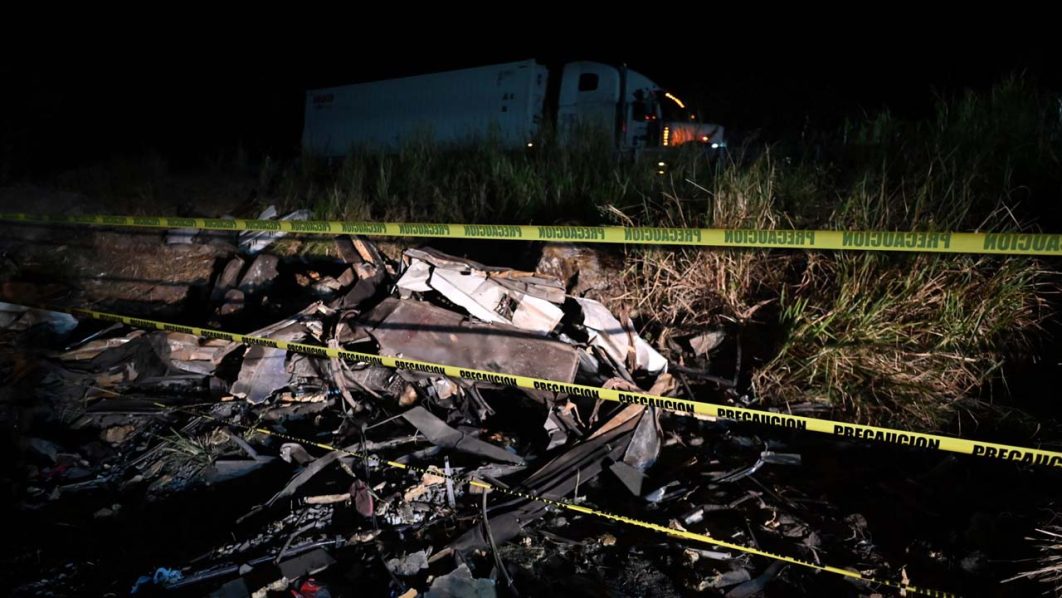
At least 39 people, most of them undocumented US-bound migrants who had just survived a perilous jungle crossing, died in a bus crash in Panama on Wednesday, officials said.
Maria Isabel Saravia, Panama’s deputy director of migration, said 28 people were also injured in the accident.
The bus plunged down a ravine and hit a minibus about 400 kilometers (250 miles) west of the capital Panama City, the National Migration Service said in a media statement.
It said the injured, including children, were being treated at various hospitals and clinics and the latest death toll was based on “preliminary information.”
Saravia said 66 people were on the bus, meaning at least one victim was likely from the vehicle it hit. She said 20 of those on the bus were minors.
UNICEF said in a note to AFP that at least three children were among the dead.
The bus was transporting migrants who had crossed the Darien Gap, an inhospitable jungle area bordering Colombia.
They were moving westward toward Costa Rica and from there aimed to continue their journey through Central America and Mexico to the United States.
The bus had travelled almost 700 kilometers in close to 14 hours and was on its way to a hostel in Gualaca near the Costa Rica border, where the passengers were to rest before continuing their journey.
Local media said the crash happened as the driver was turning the bus around after missing the hostel.
The vehicle apparently left the road on a bend and plunged down a ravine, hitting a rock and a minibus on a road below.
“We saw it coming and dived under the seats, the driver and myself, and because of that nothing happened to us,” Edgar Guerra, one of two people inside the minibus, told local media.
The nationalities of the occupants have not been revealed but Cuba’s foreign minister Bruno Rodriguez said on Twitter that Cubans were among the dead.
– ‘Great sadness’ –
President Laurentino Cortizo tweeted his “great sadness” at learning of the accident.
“This is regrettable news for Panama and the region,” he said, extending his government’s condolences to the next of kin.
“Government teams work hard on the ground, providing medical assistance to survivors of this tragedy,” the president added.
Several people were taken by ambulance to a hospital in the Chiriqui provincial capital city David, according to authorities.
Among them were 10 children aged between four and 11, including three in “critical condition,” the hospital’s director Johny Parra said.
Thousands of migrants arriving via Colombia risk their lives every year beating a path through the thick, swampy Darien Gap, a roadless jungle area replete with wild animals, dangerous rivers and criminal gangs.
According to Jose Vicente Pachar, director general of the Institute of Legal Medicine and Forensic Sciences of Panama, at least 60 migrants died crossing the Darien Gap last year, up from 50 in 2021.
The impenetrable topography has meant that plans to build a missing stretch of the Pan-American Highway through the Darien Gap have never been realized.
– Risks –
Despite the dangers, the number of irregular migrants arriving in Panama en route to the United States nearly doubled in 2022 to a record 248,000, immigration authorities reported on January 1.
More than half were Venezuelan, the rest included Ecuadorans, Haitians and Cubans, as well as people from Africa and Asia.
The government of Panama, in collaboration with United Nations agencies and aid organizations, has set up camps to provide humanitarian assistance to the migrant arrivals.
In his tweet, Cortizo reiterated his government’s “commitment to continue providing humanitarian aid and dignified conditions to face irregular migration.”
Panamanian authorities help transfer hundreds of migrants every day in private buses from the border with Colombia to Paso Canoas on the border with Costa Rica.
It is a journey of about 700 kilometers and about 10 hours for which the migrants buy a ticket.
“It is lamentable this traffic accident, these are people looking for better living conditions,” Panama’s national director of migration Samira Gozaine told the Telemetro broadcaster as she underlined the risks people take on the journey.
She said migrant buses to Paso Canoas usually travel at night when there is less traffic and conditions are cooler.
Follow our socials Whatsapp, Facebook, Instagram, Twitter, and Google News.







